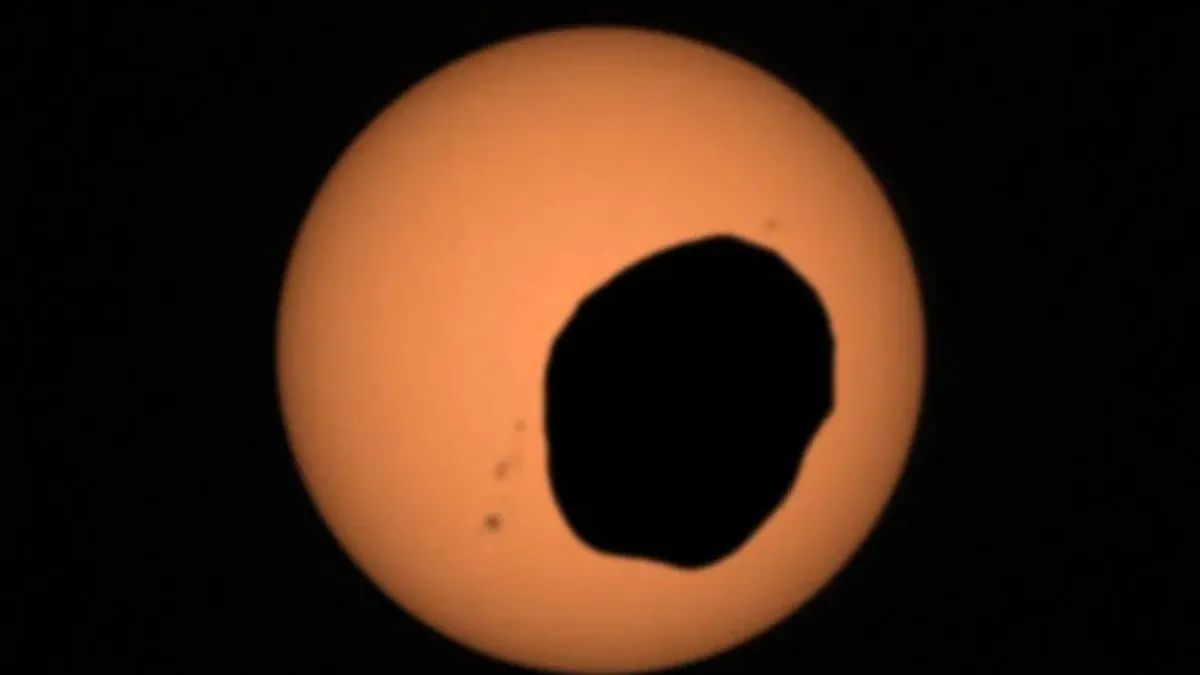
New Delhi: NASA’s Perseverance rover which is currently touring the Martian surface recently captured a majestic video of a partial eclipse on planet Mars. The eclipse termed ‘Googly Eye’ is partial in the atmosphere as Phobos crosses in front of the Sun.
The potato-shaped Martian moon was passing directly between the Sun and a point on the surface of Mars, obscuring a large part of the Sun’s disc when Perseverance’s Mastcam-Z camera clicked it on its 1,285th day (September 30) on the Red Planet.
Meanwhile, the Perseverance rover captured green spots on the rocky terrain of Mars. The rover has been exploring ancient environments, collecting samples, and investigating whether our reddish neighbour may have once supported microbial life.
What is the Phobos?
Phobos was discovered in 1877 by Asaph Hall who named it based on the mythological sons of Ares, the Greek counterpart of the Roman god, Mars. Phobos means fear and is the brother of Deimos.
Video of the Googly Eye as captured by the Perseverance Probe!!
The official X (formerly Twitter) account of the Perseverance Probe uploaded the following video of the eclipse:
Ever feel like someone’s watching you?
That’s how I felt when I observed this transit of the Martian moon Phobos! The pupil in this “googly eye” is the potato-shaped moon, and the iris is our Sun. Learn more: https://t.co/jUYoXY1jpK pic.twitter.com/7izVWOHEPH
— NASA’s Perseverance Mars Rover (@NASAPersevere) October 30, 2024
Phobos is larger than Deimos, measuring 27 by 22 by 18 kilometres in diameter. It orbits Mars three times a day and is so close to the planet’s surface that in some locations on Mars it cannot always be seen.
Phobos’ proximity to Mars means it is on a collision course with the Red Planet. It is nearing Mars at a rate of six feet (1.8 meters) every hundred years which means it will either crash into Mars in 50 million years or break up into a ring.




